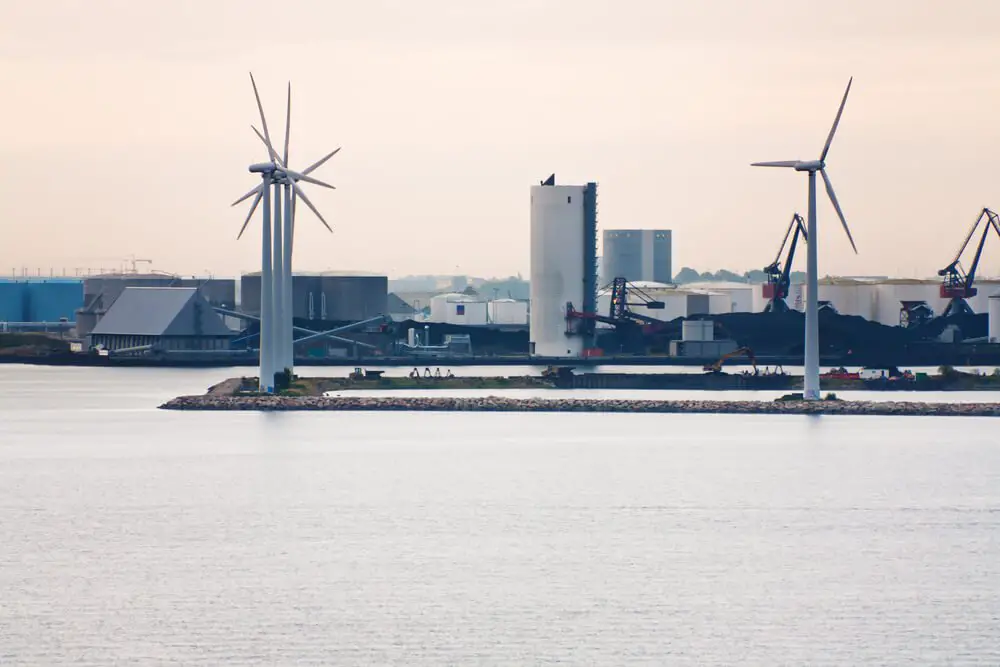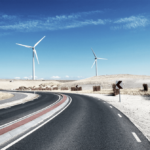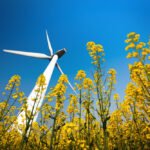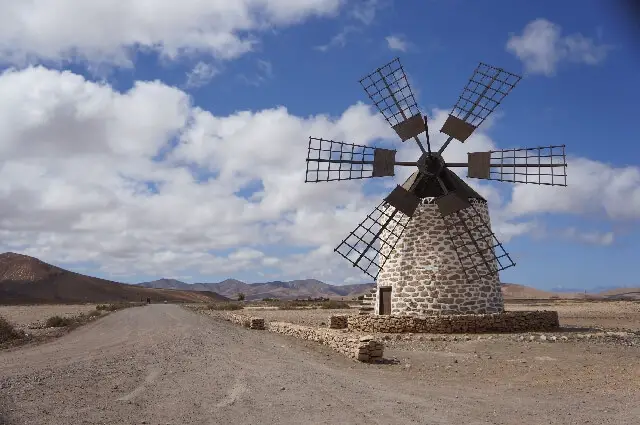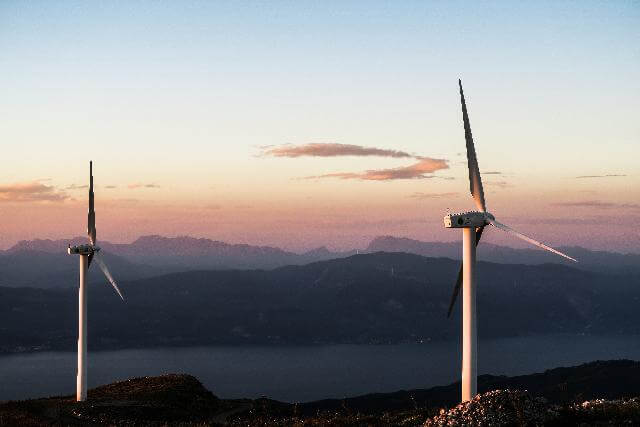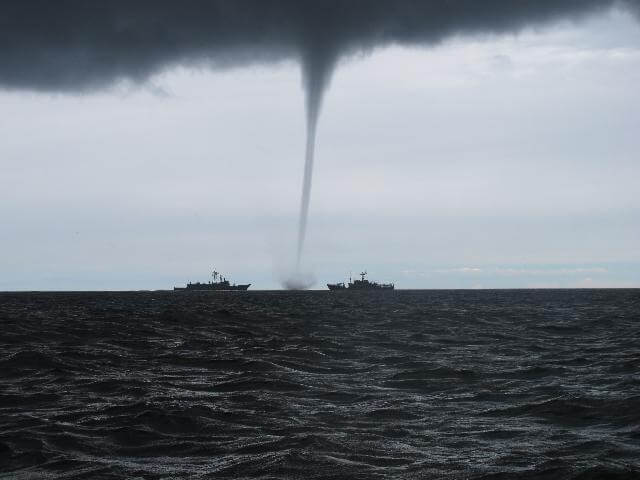In the sector of energy production, wind farm curtailment is an important issue.
If wind farms can reduce their energy curtailment, it will mean more power for areas of energy scarcity and proper utilization of every wind power grid.
Wind farm curtailment means a deliberate reduction in a farm’s energy production.
In other words, the farm restrains itself from reaching its full potential.
This usually happens when the wind farm is excelling in producing energy, but the transmission system is failing to properly distribute it.
Understanding wind farm curtailment is very important in this modern age of renewable energy.
Reducing curtailment can help us bring about a world of clean energy where there is less pollution and more energy for everyone.
What Is Wind Farm Curtailment?
Wind farm curtailment simply means reducing the output of a farm or grid.
This is usually done when there is overproduction of energy.
Or, there might not be sufficient means of harnessing the extra energy the farm produced.
You can look at farm curtailment from various angles.
If you consider the money saved by not harnessing the extra energy, farm curtailment might seem like a good economic strategy.
On the other hand, you are letting valuable energy go to waste.
So, from this angle, curtailment can look like incompetence of the said farm.
Therefore, farm curtailment depends on careful calculations.
If a state or business finds that setting up transmission methods for the surplus energy costs more than letting that energy go to waste, they would choose curtailment.
However, if an area cannot meet its energy demands and still the farm has to choose curtailment due to lack of transmission access, then it is a cause of concern.
The authorities must look into reducing the curtailment and building transmission lines.
Curtailment In Wind Farms
Wind farm curtailment generally means, shutting down some or all of the turbines in a wind farm.
Farms usually do this to compensate for the time, cost, and manpower associated with loading turbines, grid export, new plans for the farm, or others.
As with other curtailments, the surplus energy of the wind farm could have been harvested in some other way.
But due to the lack of demand or harnessing methods they had no choice but to reduce it.
Other times, general management of the wind farm requires curtailment.
Moreover, wind energy is less predictable than other forms of energy.
Despite careful monitoring and measuring techniques in place, the farm might overproduce due to the whimsical flow of wind.
In cases like this, curtailment is a normal management procedure in a wind farm.
Causes Of Wind Farm Curtailment
There are various reasons for wind farm curtailment.
The most common cause is lack of transmission access.
Apart from that, the grid infrastructure, wind speed, demand, and storage capability are also important factors that influence the amount of wind energy the farm curtails.
Transmission Constraints
This is by far the most common reason for energy curtailment in wind farms.
It usually happens when the construction of transmission fails to keep up with the pace of wind farm development.
As a result, an incompetent infrastructure exists which falls short of managing the generated wind energy.
A good example of transmission constraints is the wind farm curtailment in Scotland and England. Scotland experiences unexpected high winds often.
Plus, there are many times low demand for energy in the country.
As a result, overproduction of energy often occurs in Scotland.
At the same time, neighboring England experiences a power shortage now and then.
The excess energy from Scotland could easily find its utility in England.
But the grid interconnections between the two countries are insufficient to do this.
Therefore, despite the utility, Scotland curtails a lot of energy it generates.
General Management
Energy curtailment in wind farms can also be a part of the farm’s general manager.
Some wind farms have too many machines in a comparatively short amount of space.
In that case, certain conditions of wind require shutting down of certain turbines so that the farm can function properly.
The above practice is known as wind sector management.
Another addition to this is the grid connection agreements.
Such contracts might demand that the farm curtails its energy to keep production at a previously determined level.
Voluntary Curtailment for Environmental Reasons
Some wind farms voluntarily curtail their energy production to save the environment.
That includes conservation of endangered species, promoting de-icing, etc. Such an example is the ISO New England.
This non-profit regional transmission organization self-curtails up to 120 nights per year to protect the nearby bat populations.
The formation of ice on turbines is another reason for self-curtailing.
Many wind farms install cameras to monitor the ice condition on their turbines.
So that, they can self-curtail for the shortest amount of time.
In many places, meteorological conditions require wind farms to voluntarily curtail their energy production.
Operator Induced Curtailment
Over-production of energy during periods of low loads, voltage issues, and insufficiency of interconnections are the common reasons for operator-induced curtailment.
Market-based protocols that yield from economical evaluation, can also make a farm reduce their potential production of energy
Inaccurate calculations and predictions by the operators in the farm are another reason for wind energy curtailment.
How To Reduce Wind Farm Curtailment?
Wind energy generators around the world are implementing various strategies to reduce farm curtailment.
This ranges from constructing more transmissions to finding creative solutions to utilize the overproduced energy.
Production Management
One of the main strategies to reduce curtailment is to tactfully manage the generation of energy in the first place.
Some companies are using Automated Generation Control to achieve this.
This system responds to changes in load by adjusting the power output of generators across multiple power plants.
Some plants are managing their power generation by decreasing minimum loads on must-run units.
They are also modifying their units to turn off daily.
Moreover, these units are running their units at lower load levels.
To match demands with increased production, some power producers have started programs like charging stations for electric vehicles.
This kind of initiative stops the wasting of energy, and at the same time saves the environment.
Economic Dispatch and Negative Pricing
Economic dispatch is the process of choosing the right generator to meet the power demands.
This choice is made through calculated considerations.
Some farms are replacing their manual curtailment with an automated system.
These systems use market bids to determine the order of dispatch.
Negative pricing is another strategy to reduce curtailments.
The power management systems might enable their prices to go negative in the market.
As a result, power producers are discouraged to bid into the system during periods of low load.
Thus, overproduction is reduced.
Energy Imbalance Markets
Some system operators are working towards developing an energy imbalance market.
This kind of market will decrease curtailments through the automation of processes.
Plus, it will also provide increased access to the region’s different balancing resources.
An energy imbalance market broadens the supply of available resources.
This results in reducing the need for curtailments.
Moreover, by implementing an automated process they can better manage the extreme variations in wind power output, commonly referred to as wind ramps.
Transmission Projects and Forecasting
The undertaking of transmission projects and forecasting helps to reduce the curtailments related to transmission constraints and inaccurate calculations.
The newer transmission projects distribute wind more evenly.
Therefore, load centers and more efficient parts of the farm get a better share of the wind.
Forecasting is also improving the curtailment situation.
Some farms are using numerous forecasting to get a better grasp on short-term forecasting.
This helps to predict the wind situations and subsequent power outputs more correctly. As a result, farms are being able to reduce their operator-related curtailments.
Conclusion
Farm curtailment is not concerning as long as it is negligible.
But a forced reduction in potential output means you are losing valuable energy that could be otherwise used by people who need it.
We can hope that sufficient transmission and creative utilization of over-production will reduce wind farm curtailment in the future.
